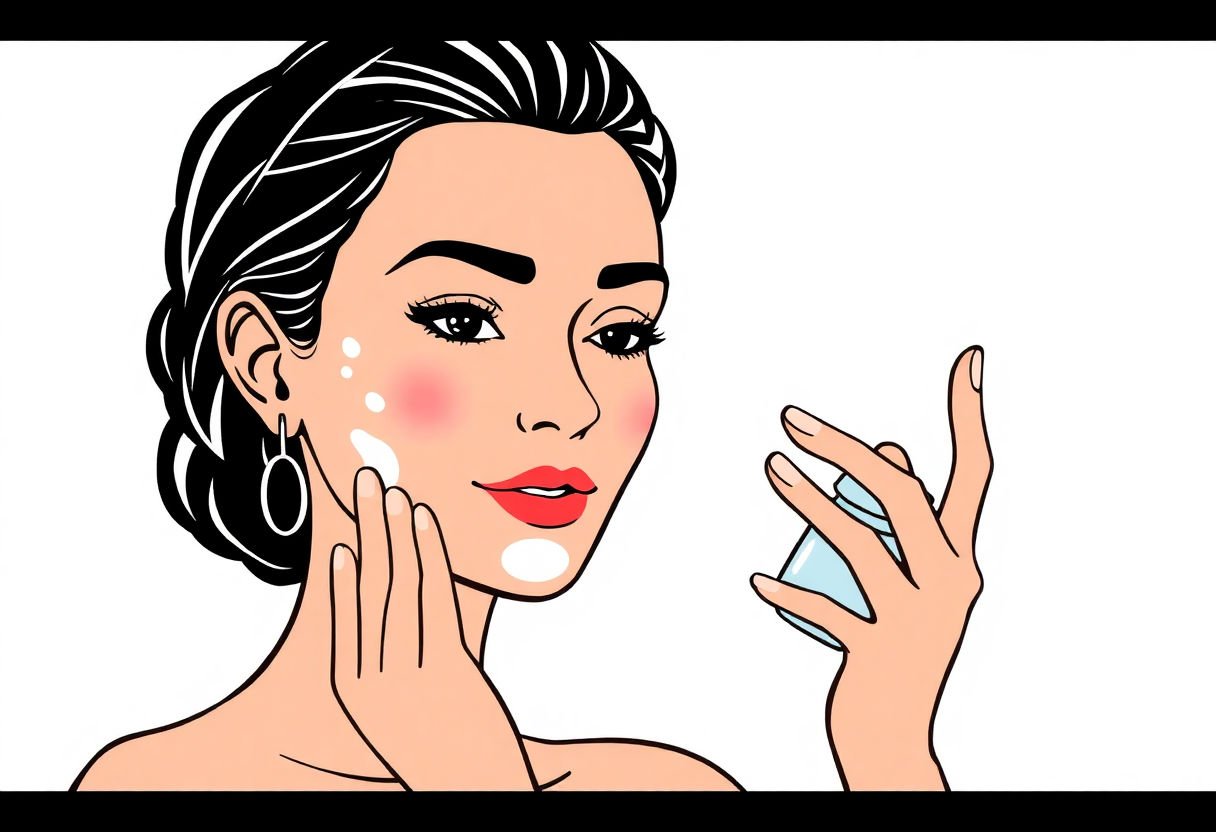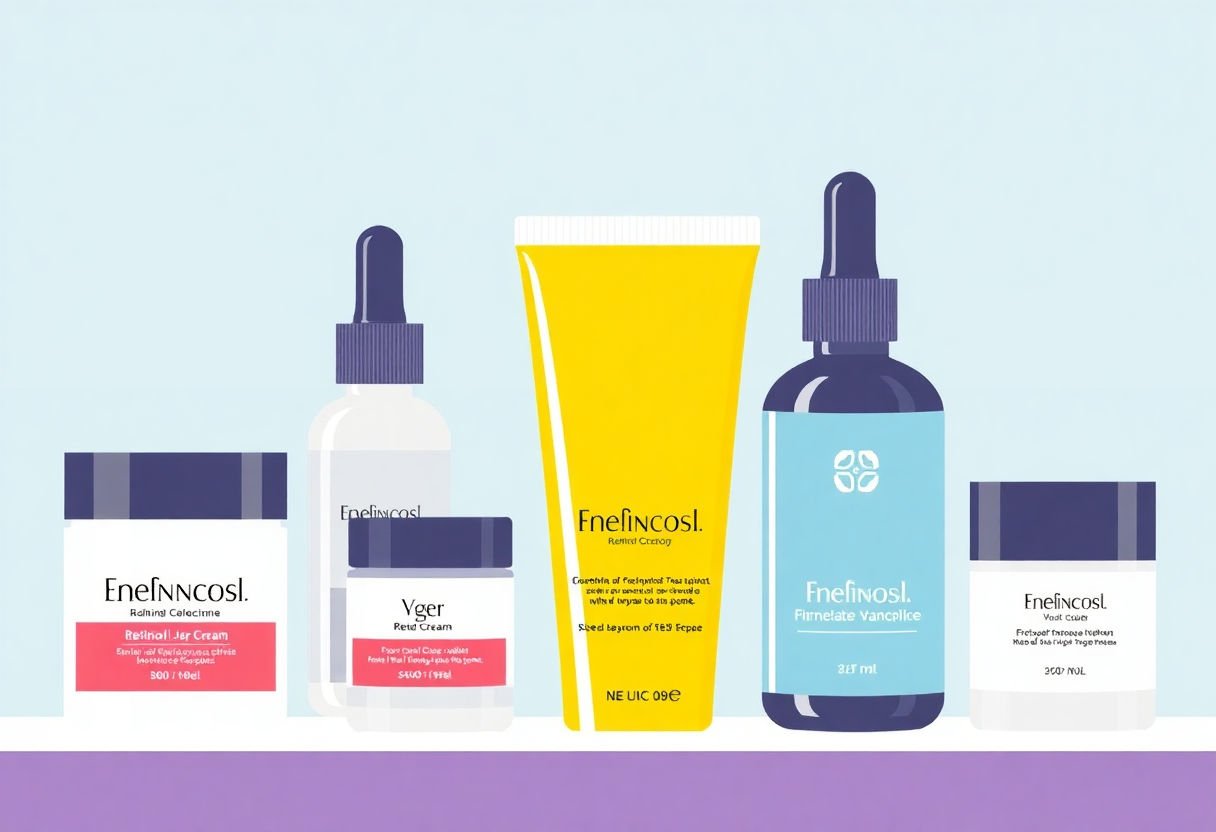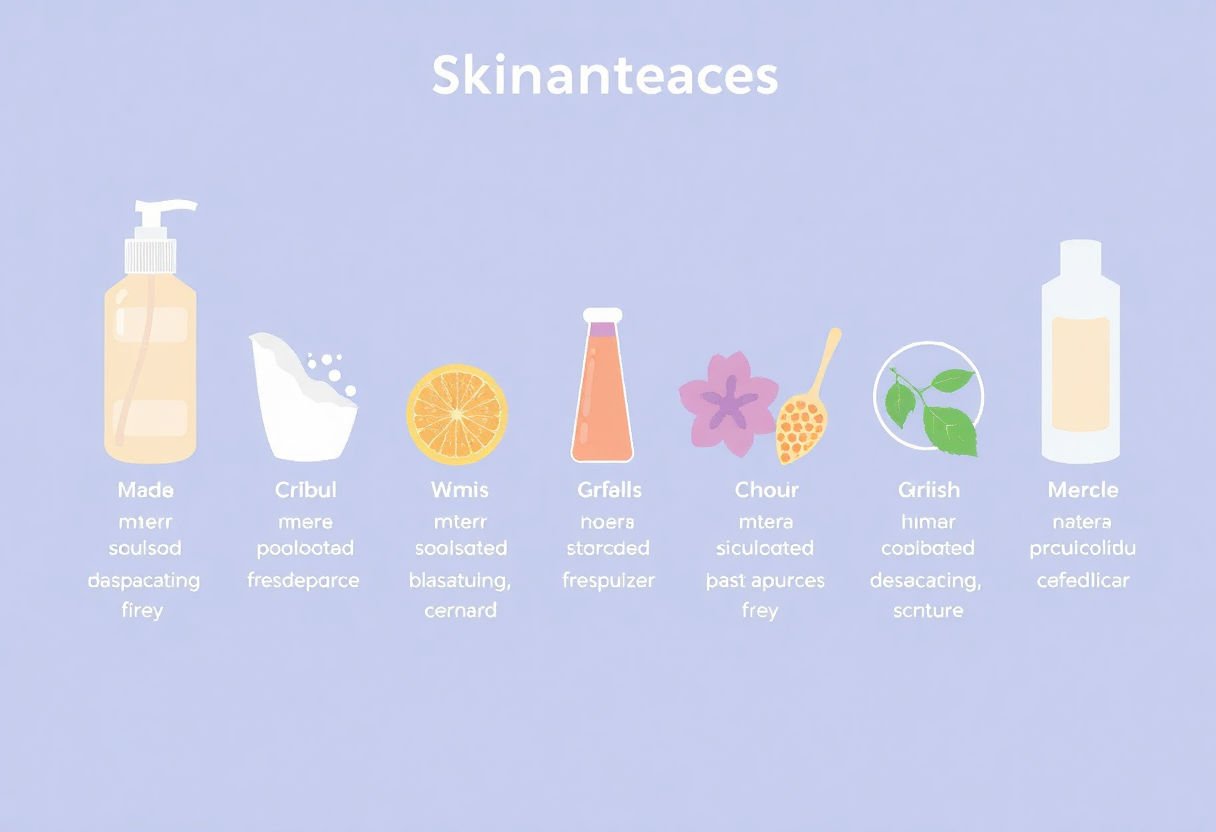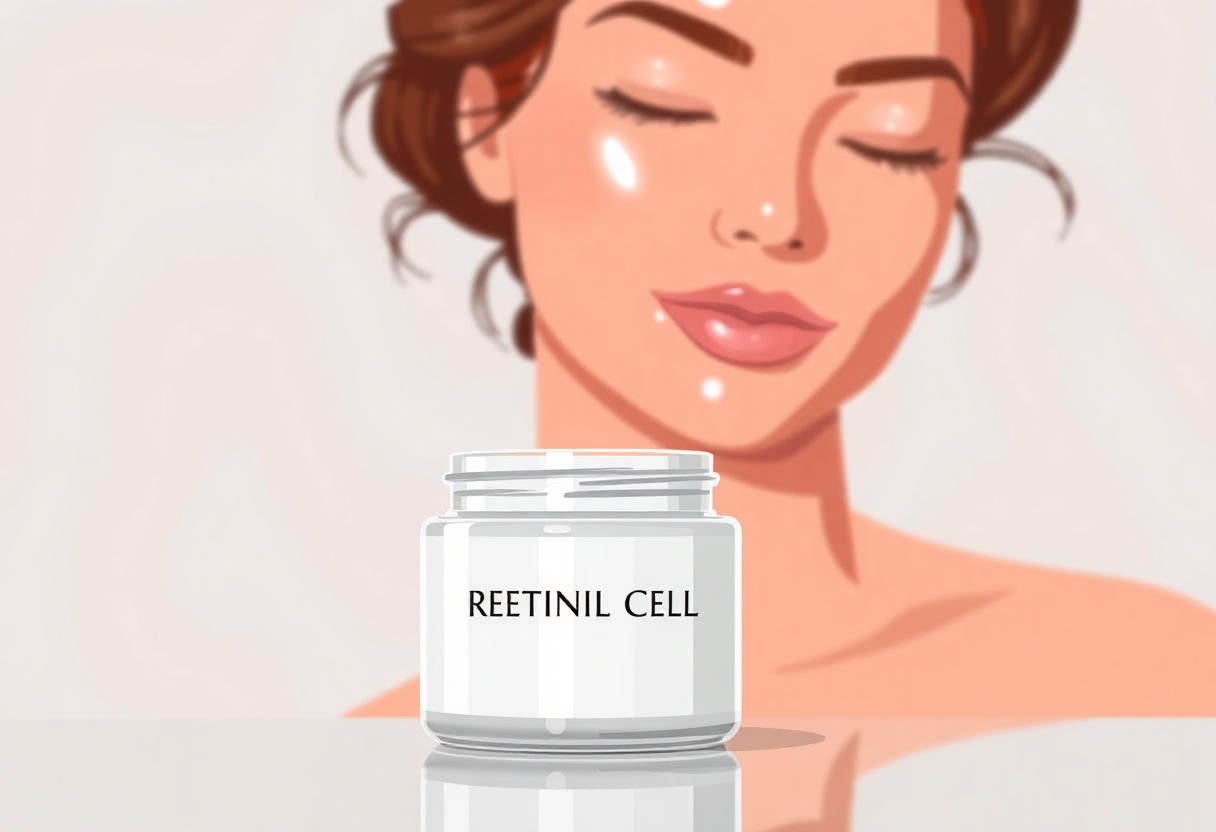Radiant skin can change how you feel. Retinol cream might be what you need. It helps reduce wrinkles, improves skin texture, and brings out your skin’s glow. Ever wondered how to start using it? This guide will show you step-by-step. Learn about retinol products and how they fit into your routine. Find out their benefits and possible side effects. Uncover the truth behind retinol myths. Finally, combine retinol with other ingredients for the best results. Ready for radiant skin? Start reading to find out more!
Key Takeaways
- Retinol helps improve skin texture and reduces the appearance of wrinkles.
- You should introduce retinol slowly into your skincare routine to avoid irritation.
- Different formulations of retinol suit different skin types; choose carefully.
- Retinol can cause side effects like dryness; use with caution.
- Combining retinol with other ingredients can enhance its benefits for radiant skin.
What is Retinol?

Retinol, a form of vitamin A, plays a big role in skincare. It comes from the same family of vitamins found in carrots and leafy greens. But instead of eating it, you put it on your skin.
Retinol works wonders. It helps speed up skin cell turnover. Think of it like this: retinol acts like a tiny worker, helping to build new skin cells faster. This process refreshes the top layer of your skin. You get smoother and brighter skin. It also helps fight signs of aging. By smoothing wrinkles, it can give you a more youthful look.
Retinol can help all skin types. But it often gives the best results for those dealing with fine lines or uneven skin tone. Over time, people notice fewer wrinkles and less dark spots.
When starting with retinol, be patient. Begin with a small amount. Use it every other night. Watch how your skin reacts. If your skin handles it well, you can use it more often. Always put on sunscreen the next day. Retinol makes your skin more sensitive to the sun.
People love retinol for its ability to rejuvenate the skin. With consistent use, you can reveal healthier, more radiant skin.
Benefits of Using Retinol Cream
Retinol cream is like a secret weapon for your skin. It helps you look and feel younger. Retinol makes your skin smoother. Think of it like polishing an old table. It removes rough spots and brings out shine. This cream reduces wrinkles, the lines on your face that come with age. It works to fill them in. You start to feel more confident when you see fewer wrinkles.
Another big benefit is how it brightens your skin. Dark spots seem less visible. It helps your face look more awake and fresh. It is like a burst of sunshine. This brightening can make you feel more youthful and lively.
People love retinol cream because it targets several skin issues at once. It helps with:
- Reducing fine lines and wrinkles
- Smoothing skin texture
- Lightening dark spots
When you start using retinol cream, start slow. Try it a few times a week. This helps your skin get used to it. Some people might feel a slight tingle, but that is normal. Just be patient, and soon you will see glowing skin.
Making retinol part of your routine can change your daily look. Like putting on a favorite outfit, it just feels right. The cream helps you face the world with a smile.
How to Introduce Retinol into Your Skincare Routine

Introducing retinol to your skincare routine can feel like adding a new ingredient while cooking. Start with a pea-sized amount. A little goes a long way. Use it once a week at first. Skin needs time to adjust.
Before applying retinol, wash your face with a gentle cleanser. Dry your skin well. Moisturize after using retinol. This helps keep skin from drying out.
Try using retinol at night. Sunlight can make it less effective. Pair it with a sunscreen in the morning. Retinol can make skin more sensitive to the sun.
Key steps for introducing retinol:
- Start slow with a low concentration.
- Use it at night.
- Apply moisturizer after retinol.
- Protect with sunscreen during the day.
“Start low and go slow,” suggests many skincare experts. This means beginning with a product that has a low percentage of retinol. Gradually increase use as your skin becomes used to it. After a few weeks, use it twice a week.
If skin gets red or irritated, scale back. Skip retinol use until your skin calms. Always listen to your skin. Reactions vary for each person.
People with certain skin conditions, like eczema, may want to be cautious. Always consult a dermatologist if unsure.
Understanding Different Retinol Products

Retinol products come in many types. They can confuse someone new to skincare. Let’s break them down.
Retinol Creams and Serums
Retinol creams and serums are two common forms. Creams are thick. They provide moisture to the skin. Serums are light. They get absorbed fast. If your skin is dry, you may like creams. If you have oily skin, a serum could be better.
Retinyl Palmitate
Retinyl palmitate is a gentler form. It is often in skincare for those with sensitive skin. It acts slowly but still works to reduce signs of aging.
Retinaldehyde
This type works faster than retinyl palmitate. It is a middle ground between gentler forms and stronger retinol. People who have moderate skin sensitivity can try this.
Retinoic Acid
Retinoic acid is the gold standard. Dermatologists often prescribe this. It acts fast and targets deep wrinkles. But it can irritate. Most people start with over-the-counter retinol first.
Choosing the Right Product
- Skin Type: Know your skin type. Dry skin often needs richer creams.
- Experience Level: Beginners may start with weaker forms.
- Goals: Deeper wrinkles might need retinoic acid.
Understanding these options helps find what suits your skin best. Start with what you are comfortable with and watch your skin improve over time.
Potential Side Effects and Precautions
Retinol creams boost skin health, but think about some side effects. Many users experience dryness or peeling. These resemble flaking paint, so start slow. Use a pea-sized amount and apply once or twice a week. Gradually increase the frequency.
Redness and Irritation: Some people experience redness. Their skin may feel like a mild sunburn. To ease this, try applying the cream after moisturizing. It can create a barrier, reducing irritation.
Sensitivity to Sunlight: Retinol increases sensitivity to the sun. A few minutes under the rays can cause more redness. Always wear sunscreen during the day. SPF 30 or higher is best.
Cautions for Sensitive Areas: Avoid eyelids and corners of the nose. These areas are thin and more prone to irritation. If you experience discomfort, stop using the product and consult a dermatologist.
Pregnancy and Breastfeeding: Avoid retinol during pregnancy or breastfeeding. Consult with a health professional for safer options.
Think about these tips:
- Start Slow: Use small amounts.
- Protect with SPF: Sun exposure can worsen side effects.
- Listen to Your Skin: If irritation persists, stop use.
A dermatologist can be your guide. They offer personalized advice, tailored to your skin.
Retinol Myths Debunked
Retinol often comes with misconceptions. Some believe it thins the skin. This is not true. Retinol makes the outer skin layer thinner. But the magic lies beneath. It thickens the deeper layers. This leads to firmer, smoother skin.
Another myth claims retinol causes harmful sun effects. Retinol can make skin more fragile to sunlight, but it does not cause harm itself. Using sunscreen solves this. Sunscreen protects skin while allowing retinol to work.
Many think retinol means saying goodbye to other products. Not the case. Retinol teams up well with many skincare items. Hydrating creams, gentle cleansers, and certain serums work alongside retinol for better results. Just avoid products like benzoyl peroxide or vitamin C right after. This prevents irritation.
A common worry involves peeling or redness when starting retinol. This occurs sometimes. But it often means retinol is working. Skin adjusts with time. Starting with low doses helps prevent this. Slowly increase usage as skin builds tolerance.
Retinol suits young and older skin. It doesn’t just target wrinkles. It handles acne, dark spots, and uneven texture. Starting early can prevent signs of aging while keeping skin clear.
Remember, no miracle happens overnight. Patience is key with retinol. Dedication leads to glowing, healthier skin. Don’t let myths steer you away. Retinol remains a powerful tool in the quest for radiant skin.
Combining Retinol with Other Skincare Ingredients

Retinol works well with several other skin products. Each combination serves a different purpose. Think of skin care as cooking. You mix the right ingredients to make a tasty dish. Mix your skin products to enhance your skin’s health and glow.
Retinol and Hyaluronic Acid
Use hyaluronic acid with retinol for extra moisture. Retinol could make the skin dry or flaky. Hyaluronic acid acts like a tall glass of water for parched skin. It helps the skin lock in moisture. This combo ensures your skin stays soft and supple.
Retinol and Vitamin C
Pair vitamin C with retinol for brightening. Vitamin C lightens dark spots and boosts glow. But do not use them at the same time. Apply vitamin C in the morning and retinol at night. This allows each to work at its best.
Retinol and Niacinamide
Niacinamide and retinol together reduce redness and large pores. Niacinamide calms the skin. It also makes it less oily. This pairing suits sensitive skin well.
Retinol and Peptides
Include peptides for firm skin. Peptides support skin structure. They help reduce lines and keep skin firm. With retinol, the skin looks youthful. Apply peptides first. Let them absorb before applying retinol.
When combining products, introduce one new item at a time. This helps you see how each item affects your skin. If irritation occurs, slow down. Let your skin adapt to fewer products. Always wear sunscreen, especially when using retinol. Sun protection keeps your skin safe and healthy.
Expert Tips for Radiant Skin with Retinol

Start Slowly
When using retinol, start with a low concentration. This helps your skin get used to the product. Use it once or twice a week. As your skin adjusts, you can increase usage.
Apply at Night
Retinol works best at night. It makes your skin sensitive to sunlight. So, apply it before bedtime. This helps your skin repair overnight.
Use Moisturizer
Retinol can dry your skin. Use a gentle moisturizer to keep your skin hydrated. Look for one that is free of fragrance. This will reduce any irritation.
Be Patient
Changes take time. You might see improvements in a few weeks, but it can take up to three months for full effects. So, stick with it.
Wear Sunscreen
Always use sunscreen during the day. Retinol can increase sun sensitivity. A broad-spectrum SPF 30 or higher protects your skin.
Avoid Mixing
Do not use retinol with certain ingredients like benzoyl peroxide or salicylic acid. They can make your skin irritated. Stick to a simple routine.
Listen to Your Skin
Keep an eye on how your skin reacts. If it’s too dry or red, reduce use. Give your skin a break if needed.
Consult a Dermatologist
If unsure, talk to a dermatologist. They can provide advice specific to your skin type.
Conclusion
Retinol cream unlocks the secret to radiant, youthful skin. People notice fewer wrinkles and smoother texture. Skin becomes bright and healthy. Start slow. Be patient. Retinol takes time to work wonders. Consistency is key. Choose the right product for your skin. Ensure it fits your skincare routine. Combine retinol carefully with other ingredients. Watch for side effects and listen to your skin. Don’t let myths stop you. Trust the facts. Start your journey toward glowing skin today. Enjoy the lasting beauty. It’s within reach.
Frequently Asked Questions
How often should I use retinol cream?
Start with using retinol cream twice a week. If your skin handles it well, increase to every other night. Always follow with moisturizer.
Can I use retinol if I have sensitive skin?
Yes, but you should begin slowly. Use a lower concentration and hydrate well. Monitor how your skin reacts.
What are common side effects of retinol?
Mild redness and peeling can occur. These effects often fade as your skin adjusts. Use sunscreen to protect your new skin.
Is it safe to use retinol cream during the day?
Retinol can make your skin more sensitive to sunlight. Use it at night and apply sunscreen daily.
When should I expect to see results from retinol?
Some people notice smoother skin within weeks. For major changes like fewer wrinkles, it might take a few months. Regular use is key.
